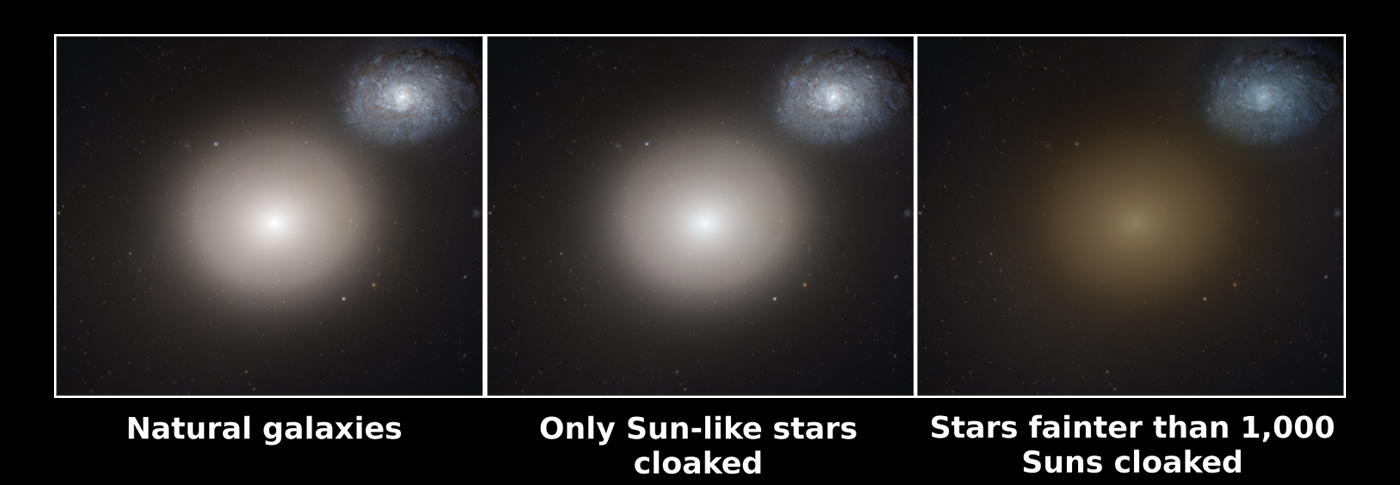Can you shroud a galaxy?
In 1964, Nikolai Kardashev proposed three levels of alien societies:
Type I societies use the energy equivalent to all of the starlight falling on their planet, Type II societies the energy of an entire star, and a Type III society uses the energy of a galaxy. Most SETI programs focus on the search for Type Is, although there have been a few searches for Type IIs in the Milky Way. In recent years, researchers have begun looking for Type IIIs. The usual idea is to look for a galaxy where every star has been bubbled by a megastructure that completely surrounds it. These megastructures, called Dyson spheres (after Freeman Dyson) were often thought to be swarms or shells of living space. Although they may be rare, a Type III society could be visible from across the Universe – or so people thought. Yet we haven't found any yet.
The problem, though, is that a classical Dyson sphere requires a lot of material to build, as much matter as is contained in all of the planets in the Solar System. Worse still, the brighter the star, the bigger the sphere needs to be. I've recently been working on a project called Sunscreen that tries to quantify the amount of material a Type III civilization might require. I wondered what would happen if an alien society found that it did not have enough matter available to encase the stars that are brighter than the Sun. When you look into the night sky, most of the stars you see are either brilliant blue stars that are much heavier than the Sun, or bright red giant stars that were once stars like the Sun but are nearing the end of their lives. In fact, almost all of the light from a galaxy comes from these bright stars, even though they are greatly outnumbered by faint stars. I found that a Type III society that could not shroud these stars would be practically unnoticeable.

With the Sunscreen computer program, we can also figure out what would happen if the aliens are more thrifty when building their megastructures. What would happen if they could cloak stars dimmer than a thousand Suns? Most galaxies roughly fall into two classes: blue galaxies that are still making stars, and red ones where only old stars still survive. In blue galaxies, most of the light comes from blue "dwarf" stars, and the brightest of these are the most blue. So if aliens could cloak all stars fainter than 1,000 Suns, the galaxy would appear bluer than most galaxies. In red galaxies, most of the light comes from red giants, and the brightest of these are also the reddest. Cloaking the fainter red giants makes these galaxies redder, redder than natural galaxies. Over the next few years, astronomers will compile catalogs of the colors of billions of galaxies. Sunscreen points to a new way of looking for Type III societies among these billions of galaxies: we can look for galaxies with unusual colors.
You can read the technical details in my paper, just published in the Publications of the Astronomical Society of the Pacific: https://dx.doi.org/10.1088/1538-3873/aaf3df
The code used in the analysis is available at https://github.com/UCBerkeleySETI/Sunscreen
Dyson sphere art by https://www.flickr.com/photos/djandywdotcom/31437348556 under CC BY-SA 2.0.
Galaxy images (Arp 116: M60 + NGC 4647) https://spacetelescope.org/images/heic1213a/
Credit: NASA, ESA
